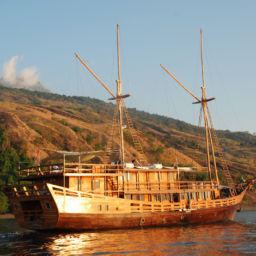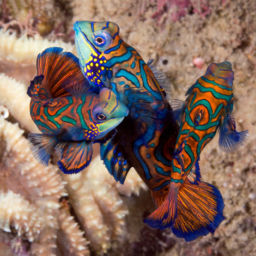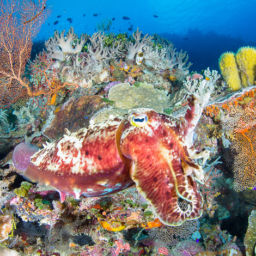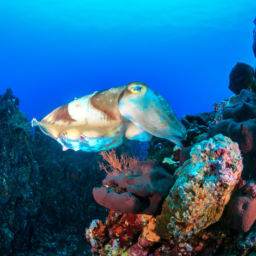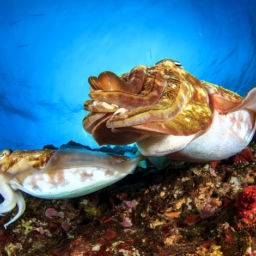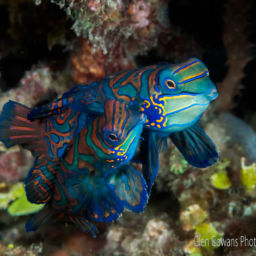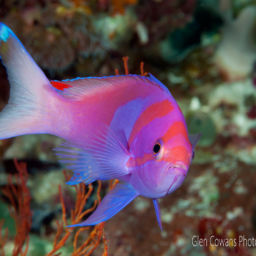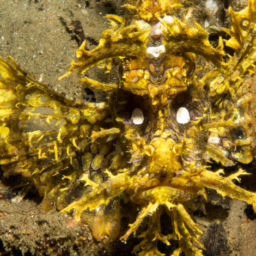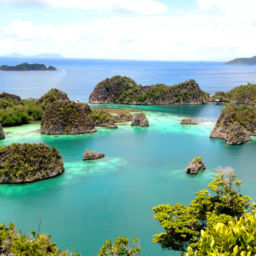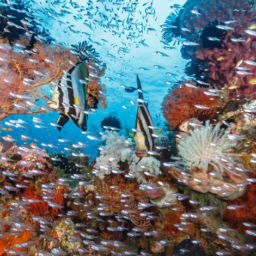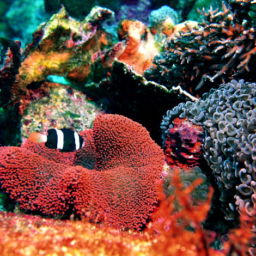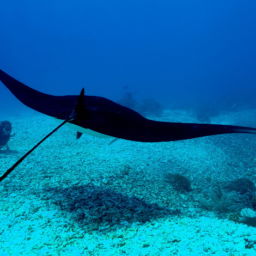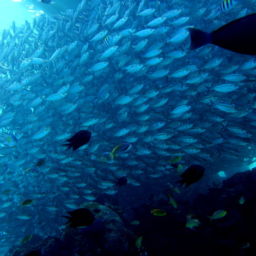North Sulawesi is home to some of Indonesia’s — if not the world’s — best wall diving. The islands that form Bunaken Marine Park drop precipitously, reaching below 2,000 feet (600 m) in some places. The best scuba diving in Bunaken features pristine hard corals, abundant reef fish, and larger pelagic species including reef sharks, eagle rays and tuna. Often simply called Bunaken, the Bunaken Marine Park consists of five islands: Manado Tua, Siladen, Mantehage, Nain and Bunaken itself. While a large volcano dominates Manado Tua’s skyline, the other four are mostly flat and surrounded by large fringing reef plates. Mangrove forests protect many of the islands’ sandy beaches, which means there’s little erosion and a tranquil atmosphere even on wavy days.
Scuba diving in Bunaken
The dive sites around the islands are slopes, walls or sloping walls. Briefings instruct divers to descend to a set maximum depth before going ‘reef left’ or ‘reef right,’ depending on the current. Not all of the drops are sheer, though, and a number of flat, sandy areas make this a great training ground for new divers, too.
Traditionally, the islanders here were fishermen. Recently, however, dive resorts and homestays have provided more employment options. Many area dive guides are from Central and South Sulawesi. The park offers plenty of dive sites to choose from, with operators based mostly on Bunaken and Siladen. Dive centers on mainland Sulawesi also offer trips to the Marine Park.
Most resorts offer full board, and some also have small cafes or bars perfect for socializing at the end of a diving day. To check out how the locals live, it’s worth taking a stroll into the nearby villages on the islands. Here are our picks for the best scuba diving in Bunaken.
Ron’s Point
Where is it: On the southwest corner of Bunaken island, Ron’s Point is a sloping reef running out into a large plateau which varies from 114 to 130 feet (35 to 40 m).
What makes it special: Situated right on the edge of the island’s fringing reef, this is the perfect spot to see pelagic species like sharks and eagle rays pass by. Many dive guides might start and end the dive on the sloping reef while spending the best part hanging out above the plateau looking for big stuff. With luck, you might even spot a dugong in the shallow parts of the site.
Mandolin Reef
Where is it: right around the corner from Ron’s Point on the west side of Bunaken and facing the island of Manado Tua lies Mandolin Reef.
What makes it special: The water in front of the reef runs as deep as 1,900 feet (600 m) in places, which makes it another excellent place to spot sharks and tuna. Technical divers will enjoy hovering over smaller outcrops within the reef which start from about 148 feet (45 m).
Sachiko I and II
Where is it: On the east side of the island lie the slopes of Sachiko I and II. They are home to wire corals, Napoleon wrasse and plenty of a Bunaken favorite — green turtles.
What makes it special: Whether there is a bit of current on these dives or not, there is always plenty of life on the reefs. While your dive guide is checking for small stuff, it’s worth keeping an eye in the blue for larger marine life.
Lekuan II
Where is it: along the south of Bunaken island lies the vertical wall of Lekuan II.
What makes it special: The boats generally drop divers in a recess here, close to a shallow overhang which is home to juvenile reef sharks. A wall for fans of macro and large life alike, this site combines amazing amounts of life with impressive topography.
Muka Kampung
Where is it: Literally translated, Muka Kampung means “in front of the village” — that is, the main village on Bunaken island.
What makes it special: Generally, this is a gentle to moderate drift along a large sloping wall. But don’t worry, there are a few eddies along the wall, giving divers a break from the current and a chance to look for smaller species such as ornate ghost pipefish.
Pangalingan
Where is it: On the south side of Manado Tua island, Pangalingan is for fans of adrenaline diving.
What makes it special: This current-swept dive site offers a chance to see schooling snappers, fusiliers and other reef fish while ducking and diving around the current.
Bualo
Where is it: Bualo is on the west side of Manado Tua.
What makes it special: More relaxed than Pangalingan, this dive site features a few great overhangs and offers great chances of spotting pelagics as well as small stuff.
Siladen Wall
Where is it: On the southwest side of the smallest of the marine parks’ islands, lies this site named after its island.
What makes it special: Siladen is another site where you have a great chance to see small and big stuff alike. A gentle current usually pushes divers along this wall and with characteristic good visibility, this can really give you a panorama-dive feel.
Barracuda Point
Where is it: Barracuda Point is on the west side of Mantehage, the large island to the north of Bunaken.
What makes it special: The clue is in the name – this is one of the best spots to encounter schooling barracuda, midnight snappers and other species. It’s worth the one-hour-plus boat ride from Bunaken or Siladen.
Manado Wreck
Where is it: The Manado wreck lies in 79 to 130 feet (24 to 40 m) just outside the marine park and off the coast of North Sulawesi to the east of the city of Manado.
What makes it special: A bit of mystery surrounds this wreck, as almost nothing is known about it apart from it having sunk during World War II. About 160 to 200 feet (50 to 60 m) long, the wreck still has intact propellers at 130 feet (40 m) and a few penetration opportunities in shallower parts. It also features a lot of natural coral growth and is a great spot for pipefish and blue dragon nudibranchs.








